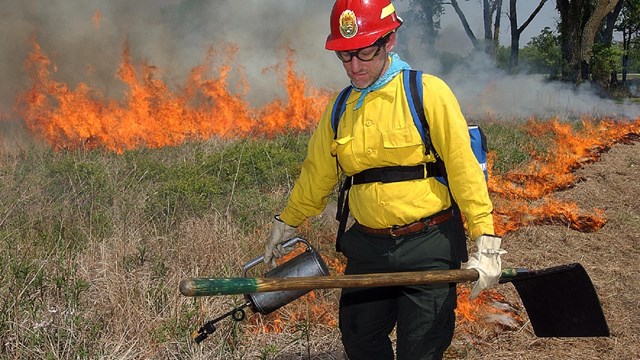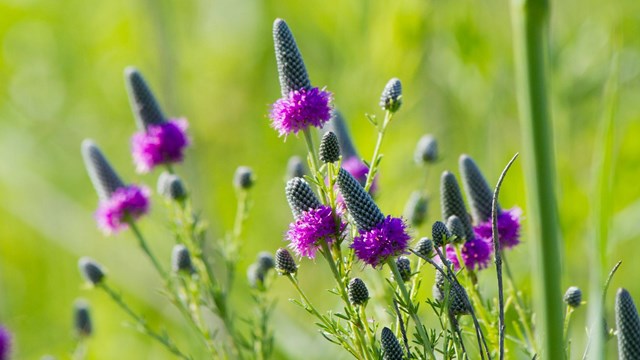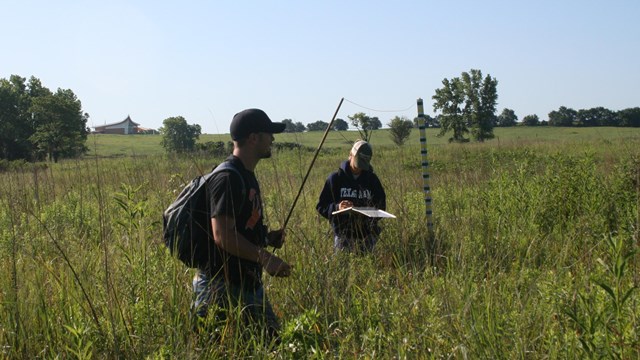
Prescribed Fire at Homestead
Utilizing fire as a tool to keep the tallgrass prairie healthy has been prescribed for Homestead. 
Plants
Learn about the diversity of plants found in the tallgrass prairie and mesic bur oak forest 
Permits for Scientific Study
If you would like to conduct research at Homestead NM of America you will be required to fill out a permit. The permitting system is online. Vast tallgrass prairie once covered 170 million acres of North America. Southeastern Nebraska, with its abundant rainfall, was historical part of this tallgrass ecosystem which requires more moisture than the shorter grasses of the arid West. Tallgrass prairie is highly diverse and provides food and cover for a variety of insects, birds, and mammals. Prairie soil is also extremely fertile, having been nourished for centuries by decaying plant material. For this reason, areas that were once tallgrass prairie are now some of the most productive agricultural lands in the world. This fact has contributed to the immense loss and fragmentation of the prairie habitat in the past 150 years, with less than 4% remaining today. To support and share this rare ecosystem, Homestead preserves 100 acres of restored tallgrass prairie. It is a monumental task to recreate wilderness, and a restored prairie will never exactly repeat the original mix of plant and animal life. However, the species composition of the tallgrass prairie at Homestead successfully resembles that of presettlement times. Dominant species include big bluestem, little bluestem, Indiangrass, switchgrass, goldenrod, field pussytoes, and leadplant. Interspersed within the prairie are thickets of shrubby species such as sumac, wild plum, and dogwood, which provide habitat for birds and other small animals; the growth of these thickets are managed to ensure they do not hinder the health of the prairie. Approximately 0.75 acre of virgin tallgrass prairie is located at the Freeman School, which was incorporated into the park in 1970. This area was never plowed, and despite heavy use for nearly a century as the school playground, it contains the most diverse assemblage of species found in the park. |
Last updated: March 15, 2021
